Lawn Tantrum? Don’t Panic! How to Rescue Your Grass from Fertilizer Burn?
Picture this: You have the best intentions for your lawn, diligently applying fertilizer to nurture that lush, green carpet of grass. But, much to your dismay, instead of thriving, your grass starts to show signs of distress – yellowing, browning, wilting. What went wrong?
Fertilizer burn is like an unwanted souvenir from a well-meaning gesture. It occurs when fertilizers are overapplied or not watered in properly, causing an excess of salts to build up in the soil. These salty conditions essentially dehydrate the grass roots and prevent them from absorbing essential water and nutrients.
In simpler terms, fertilizer burn is like giving your lawn too much of a good thing – it’s a case where more isn’t always merrier for your grass. This imbalance can lead to stunted growth, discoloration, and even damage to the entire turf if left unchecked. So why should you care? Because understanding fertilizer burn is the first step in rescuing your lawn from this nutrient overdose nightmare.
The primary reason why fertilizer burns grass is because the nutrients in the fertilizer are too concentrated for the grass to handle. The roots of the grass can’t take up the nutrients fast enough, so they build up in the soil removing moisture and oxygen causing the grass blades to burn.
Understanding Fertilizer Burn
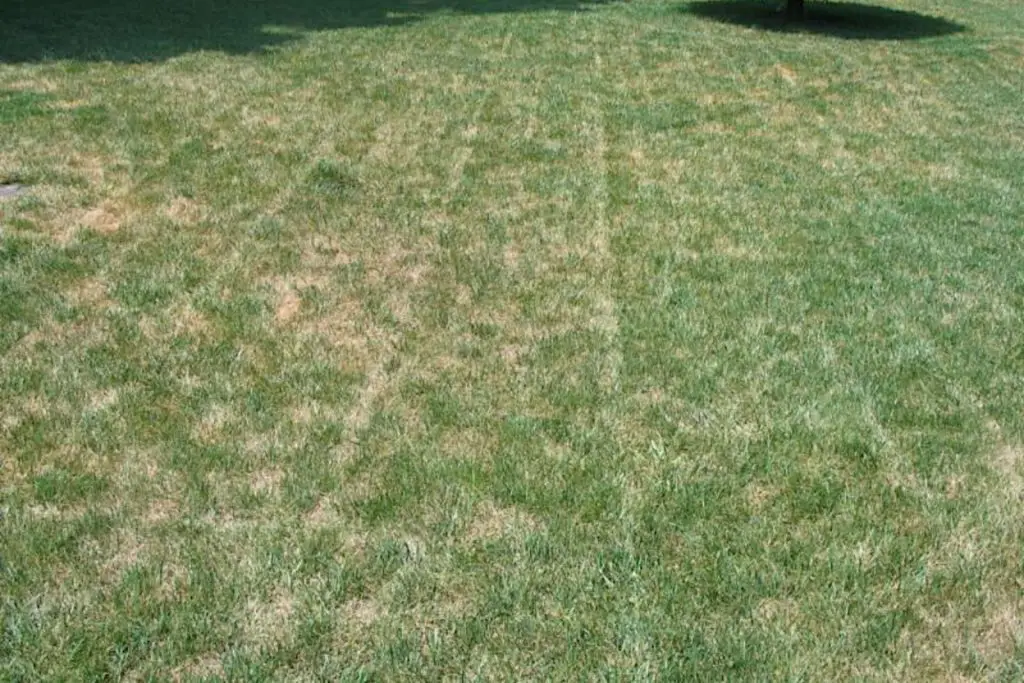
Fertilizers are meant to be a helping hand for your lawn, providing essential nutrients for growth and development. When you apply fertilizer, as it is hygroscopic, it absorbs and takes moisture and oxygen out of the ground and the soil becomes drier and less able to hold water. This is caused by an excess of nitrogen or ammonium sulfate, and other salts in the fertilizer, When there is an excessive build-up of these mineral salts in the soil, the grass dries out.
Fertilizing your lawn is not the same as giving it a chemical makeover. While fertilizers provide essential nutrients, overfertilization can be detrimental. It’s essential to understand the difference between nurturing your lawn and accidentally harming it.
Overuse of chemical fertilizer can reduce organic matter and humus in the soil, as well as increase acidification, which leads to a high risk of fertilizer burn which will cause stunted grass growth and eventually areas of dead grass.
The overuse of fertilizer, therefore, either in the short term or over a period of time will be detrimental to the grass, as the roots of the grass don’t get enough water which leads to yellow or browning of the grass blades that are the telltale signs of fertilizer burn.
Beyond Overuse: What Causes Fertilizer Burn?
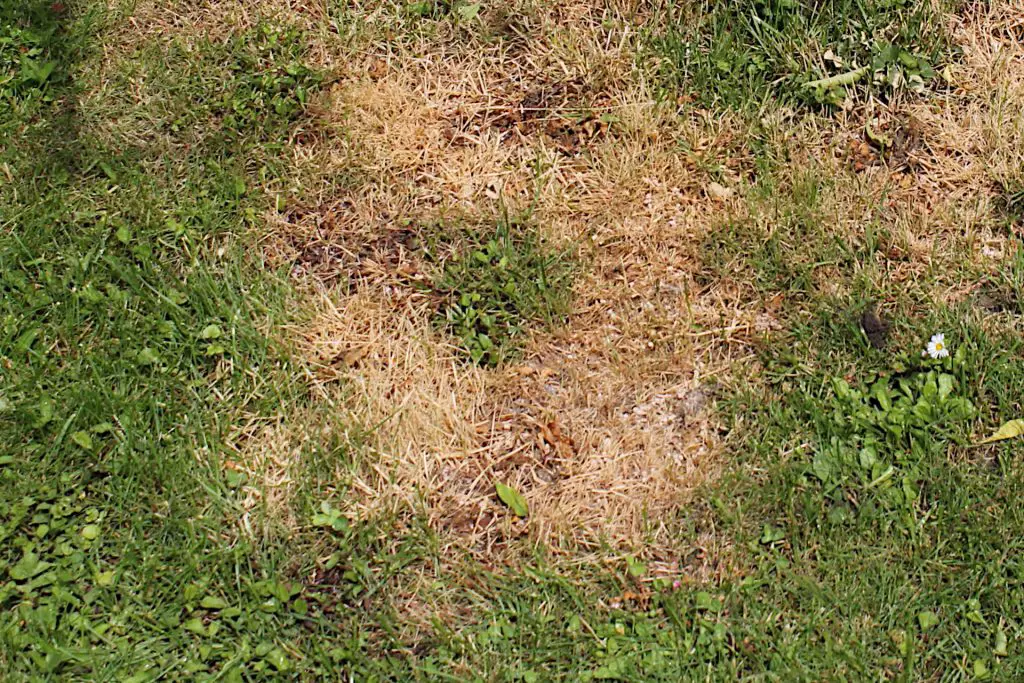
The Wrong Fertilizer
Not only is overuse a problem but using the wrong fertilizer is also detrimental. The result is similar that when applied improperly or in excess, and can become the culprit behind fertilizer burn. There are several types of fertilizers that can cause burn, including:
- High-nitrogen fertilizers: These fertilizers can cause a rapid release of nitrogen, overwhelming the grass roots and leading to burn.
- Quick-release fertilizers: Fertilizers that release nutrients quickly can cause a surge in growth, but also increase the risk of burn.
- Improper application: Applying fertilizer unevenly, using too much, or failing to follow instructions can lead to fertilizer burn.
The right fertilizer will depend on a number of factors but soil testing before application will provide you with the information to avoid using the wrong nitrogen, phosphorous and potassium ratio (NPK).
Weather Woes: Wrong Timing
Timing is everything in the world of fertilizing. Applying fertilizer during periods of extreme heat or drought can stress out your grass even more, making it more susceptible to burn injuries and making it even more challenging for your lawn to recover.
Knowing when to fertilize – and when to hold off – can make all the difference in helping your grass thrive without suffering from burns. When the soil is dry, the fertilizer can draw out even more moisture, further stressing the grass. This creates a vicious cycle, making it harder for your lawn to bounce back.
Concentrated Areas: Avoiding Patchy Disasters
A further cause can be uneven distribution. Imagine pouring all your love into one spot, hoping it will spread and flourish across the lawn – sounds good in theory but could spell disaster for your grass!
Concentrating fertilizer in specific areas leads to an inconsistent distribution of nutrients and compounds the risk of burning those sections. It’s like making sure everyone gets their fair share on Thanksgiving; spreading that generosity evenly will prevent any one area from feeling overwhelmed and scorched by too much goodness at once.
What Are the Symptoms of Fertilizer Burn on Grass?
| Symptom | Description |
|---|---|
| Discolored blades | The most common sign is yellowing or browning of grass blades, starting at the tips and margins. |
| Stunted growth | Burned grass may stop growing or grow very slowly. |
| Wilting | Affected areas may appear wilted and dry, even after watering. |
| Patchy appearance | Burn often occurs in patches where fertilizer was applied unevenly or concentrated. |
| Thatched layer | Severe burn can lead to a thick, matted layer of dead grass blades and roots at the base of the plant. |
If your lawn begins to turn yellowish or brown this is often a sign of mild fertilizer burn. This usually happens when you use too much fertilizer but can also be caused by a gradual build-up of salts in the soil from general over-fertilizing. If you notice yellowing or browning near the roots of your grass you should look to take action immediately.
With severe fertilizer burn you will see areas of brown grass and dead spots appear with the grass blades becoming brittle and breaking easily. These areas are often referred to as “brown patches.” Again, severe fertilizer burn can be caused by either a single fertilizer application or the cumulative effect over a period of time. In this latter scenario, it would be hoped that you would have picked up on the initial yellowing of the blades and taken action at that point.
The effect of fertilizer burn can be graphically seen when you spill fertilizer on the grass, if left for any length of time it will begin to stain the green color. This is the result of a concentrated amount of nitrogen and salts being absorbed quickly into the soil.
Another minor illustration of fertilizer burn can be seen with dog urine. Dogs tend to urinate in the same spots and the grass turns yellow. This is caused which by an excess of urea in dog urine which is high in nitrogen.
From Brown to Beautiful: Recovering Your Lawn
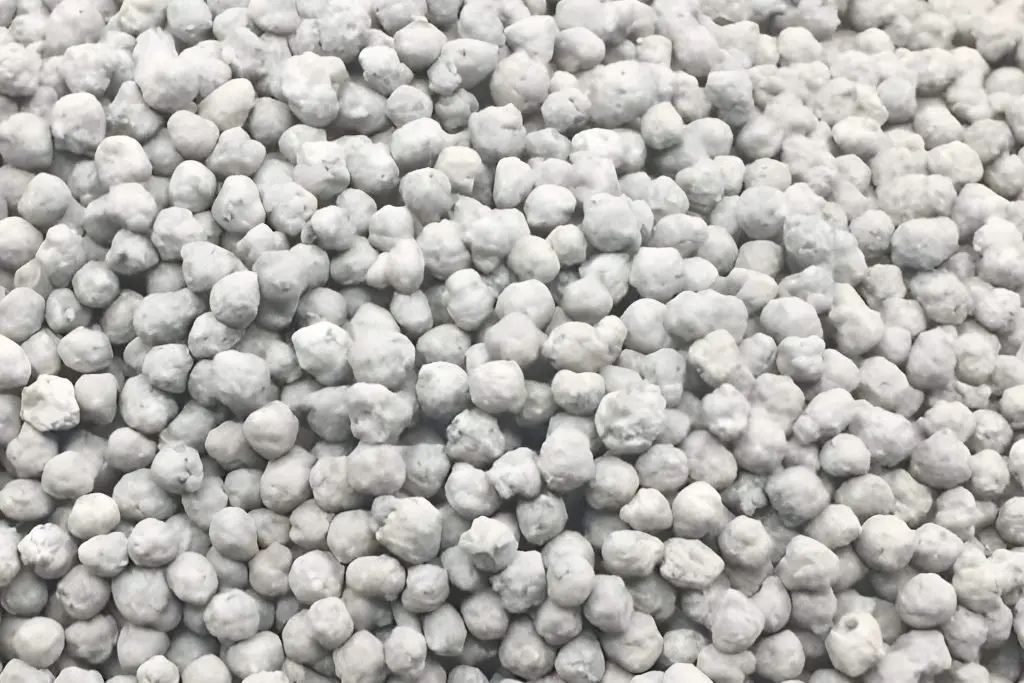
Don’t despair if your lawn is suffering from fertilizer burn. The good news is, with some care and the right approach, you can transform those burnt patches back into a lush green haven. Here’s your battle plan for a successful lawn recovery:
If you see signs of fertilizer burn before they get out of hand, you should look to take action straight away. You don’t want to wait until it’s too late to save your turf.
Depending on the extent of the problem there are two immediate tasks one is to reduce the nitrogen levels in the soil and secondly, add moisture and oxygen back into the soil.
Step 1: Damage Assessment: Knowing Your Enemy
The first step is to assess the extent of the fertilizer burn. Take a close look at your lawn. Are there just a few scattered brown spots, or is it a widespread case of lawn-wide sunburn?
- Small Patches: If the burn is limited to isolated areas, you can breathe a sigh of relief! These will likely recover with proper watering and care.
- Widespread Browning: For extensive burn covering a large portion of your lawn, a more intensive approach might be needed, including overseeding (planting new grass seeds) in the most severely affected areas.
The first thing to do is to immediately conduct a soil test to evaluate the extent of the issue you face. You can do this with soil test kits, digital soil testers, or send a soil sample to your local county extension office.
Digging up a patch of grass will give you an idea of how healthy the entire area looks. If the roots are brown or blackened, it’s likely the grass hasn’t been suffering from a lack of moisture and oxygen.
Step 2: Aerate and Prepare the Ground
Sometimes, fertilizer burn can compact the soil, making it harder for oxygen and water to reach the roots. This can further hinder recovery. Aeration can be a great way to combat this, giving your lawn room to breathe:
Aerate the whole lawn and till the damaged areas to provide better air circulation and oxygen into the soil and to help with the second process of flushing out excess salts.
Step 3: Hydration – Flush Out Excess Salts
Salt is a major cause of fertilizers burning up during application. This causes problems such as soil erosion, nutrient loss, and even crop failure. In fact, there millions of cases of fertilizer burn each year in the United States alone.
Water is the lifeblood of your lawn, especially when it’s recovering from fertilizer burn. The key is to deeply soak the soil, flushing out the excess fertilizer salts that are causing the damage. Here’s the watering strategy:
Flushing out the salt will keep it away from the fertilizer, preventing further damage. Afterward, you’ll want to water the area thoroughly to ensure that the salt doesn’t wash into the groundwater. If you’re worried about runoff, apply a layer of mulch around the plants to reduce evaporation.
- Deep and Slow: Instead of frequent, shallow watering, aim for deep soakings that penetrate the soil several inches down. This helps dilute the fertilizer concentration around the roots.
- Know Your Schedule: The best time to water is early morning, as this allows the water to soak into the soil before the sun evaporates it. Avoid watering in the heat of the day, as this can promote fungal growth.
- Be Patient: Don’t expect overnight results. Consistent deep watering over several days (depending on the severity) is key to flushing out the excess salts.
Step 4: Add Sawdust or Woodchip Mulch and Amendments
Whilst watering can help flush out some of the salts and wash away some of the nitrogen, it might not be enough. One of the best ways to remove nitrogen from the soil is to lay a sawdust or woodchip mulch.
Wood is an organic material that is often used as a carbon-rich material in compost piles. It loves nitrogen reacting with it and breaking down into humus. The advantage of putting down fine woodchips or sawdust is that it will help reintroduce organic matter into the soil.
If your soil test shows excessive acidity in the soil you should apply some lime to bring the pH levels back into balance for good grass growth.
Step 5: Overseed
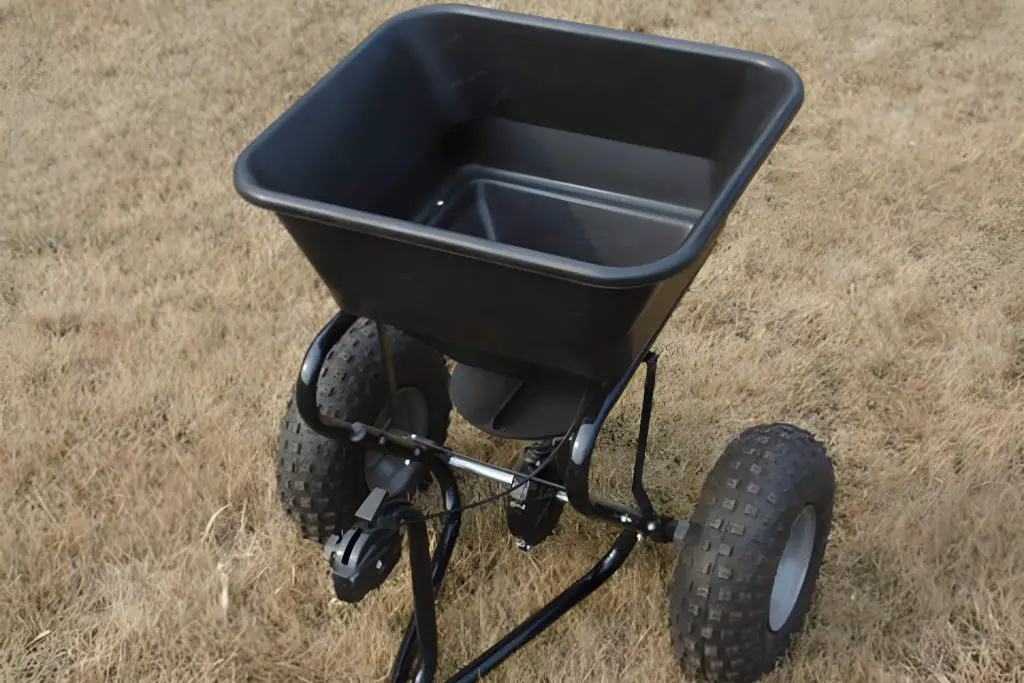
If you have large areas of dead grass you should take the chance to overseed. New grass seeds need extra nitrogen in the germination process which is why you would ordinarily put down starter fertilizer with the seeds. In this case, however, as the soil is still likely to have excess nutrient levels and unless you have successfully flushed out the excess nitrogen, you will be able to do so without adding any more fertilizer.
If the over-fertilization is particularly bad and the nitrogen levels are too high, you will have to wait before overseeding, continuing to test the soil until the levels become acceptable.
Step 6: Allow Grass to Grow
At this point, you will then have to leave it and wait for the new growth of both the existing grass and new seeds. Keep monitoring the nutrient levels of the soil and then if required add organic or slow-release fertilizer.
Then mow it down to about 3-4 inches high. Wait another month or so and let it grow back up. This process takes anywhere from 8 to 12 weeks depending on watering or how much rain there has been. Once the grass is growing well, begin to gradually reapply fertilizer if needed and water regularly and constantly monitor the nutrient levels with regular soil testing.
Prevention is Key: Keeping Your Lawn Happy and Healthy
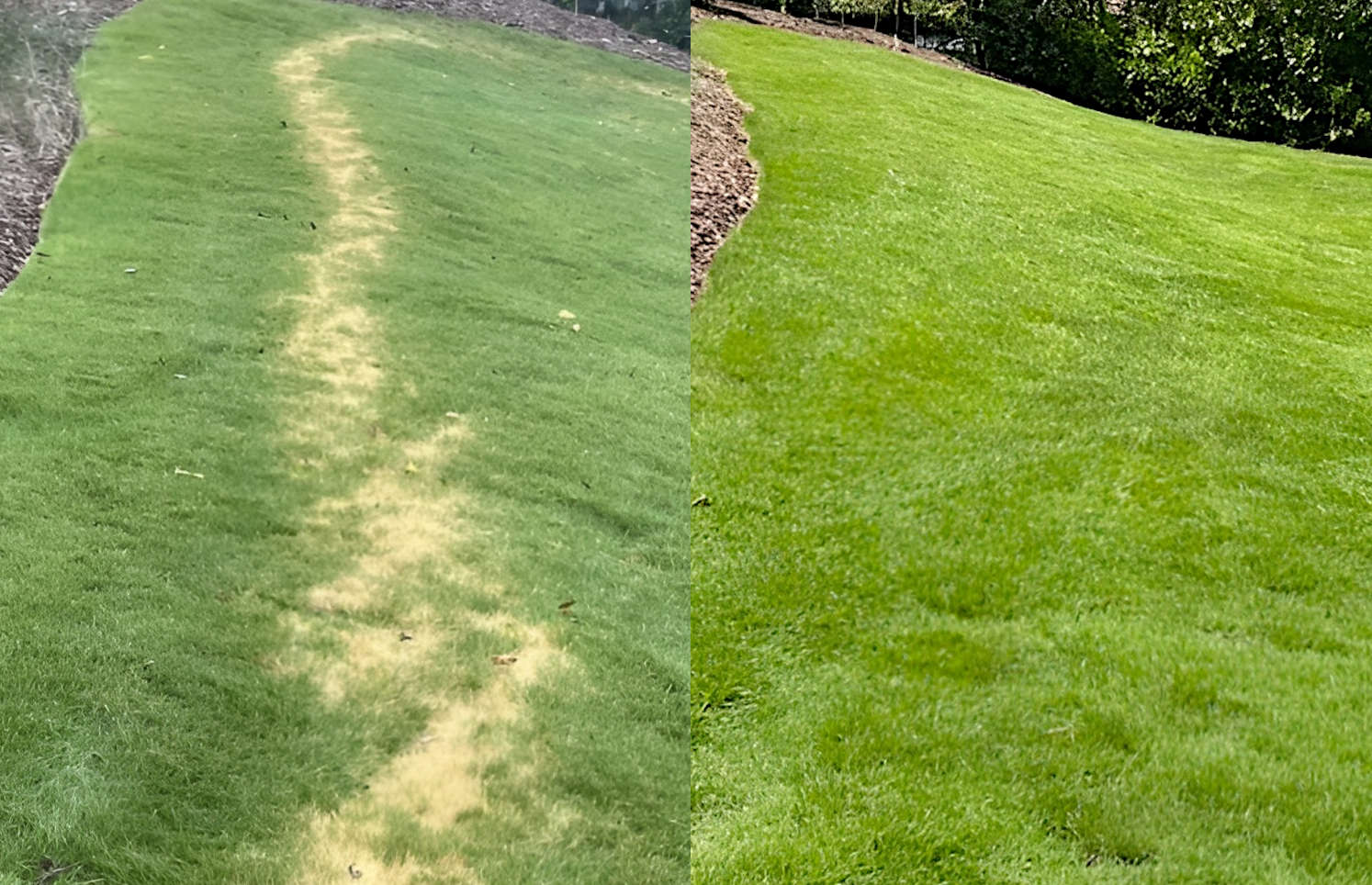
Nobody enjoys dealing with a burnt lawn, so let’s talk about how to prevent this grassy meltdown from happening in the first place. By following these preventative measures, you can keep your lawn thriving and avoid future issues:
There are many ways to prevent fertilizer burn. You can choose organic fertilizers over chemical ones. Organic fertilizers contain natural ingredients like composted manure, peat moss, and fish emulsion. They will provide slow-release nitrogen, which allows the grass to absorb it slowly.
Know Your Soil: A Targeted Approach
Before you reach for the fertilizer bag, it’s crucial to understand your lawn’s specific needs. Different soil types have varying nutrient levels. Here’s how a little knowledge goes a long way:
- Get a Soil Test: A soil test is an invaluable tool. It analyzes your soil’s composition and reveals its current nutrient levels. This helps you avoid unnecessary fertilizing and ensures you’re providing the nutrients your lawn actually needs.
Slow and Steady: The Power of Slow-Release Fertilizer
Not all fertilizers are created equal when it comes to burn risk. Here’s how to choose the right type:
- Slow-Release Champions: Opt for slow-release fertilizers. These release nutrients gradually over time, minimizing the risk of overwhelming your lawn. Think of it as a slow and steady drip-feed, providing a balanced diet for your grass.
- Less is More: Always follow the application instructions on the fertilizer bag carefully. Remember, it’s always better to err on the side of less fertilizer. You can always add more later if needed, but you can’t easily take away what’s already been applied.
Spot Treatment: A Targeted Approach
Sometimes, only specific areas of your lawn might show signs of weakness or nutrient deficiency. Here’s how to address these situations:
- Spot-Treating Champs: Instead of fertilizing the entire lawn, consider spot-treating areas showing signs of struggle. This helps avoid unnecessary fertilizer application and reduces the risk of burn on healthy parts of your lawn.
Embrace the Natural Approach
For an eco-friendly option, consider natural or organic fertilizers. These typically release nutrients even slower than traditional fertilizers and are less likely to cause burn. Additionally, practices like composting and using composted tea can add essential nutrients to your soil and promote healthy lawn growth.
Tighten Your Approach to Putting Down Fertilizer
Remove Excess Fertilizer
As we have seen excessive use of nitrogen fertilizers can lead to salt accumulation in grassy areas. This can happen even if you do not observe excessive amounts of fertilizer being applied. To prevent salt buildup, follow these steps:
- Use a finger or small shovel to scoop up any excess fertilizer before it begins to dry out.
- Avoid applying fertilizer during wet weather conditions.
- Apply fertilizer according to the manufacturer’s instructions.
- Monitor soil moisture levels closely. If necessary, add water to maintain proper soil moisture.
Add Water and Aerate
Overusing fertilizer will kill your lawn quickly. If you overfeed your lawn, it won’t grow properly. Instead of adding fertilizer to your lawn, you should water regularly and maintain optimum moisture levels in the soil which are usually between 21-40%, dependent on the soil type1. This helps it recover faster.
Keep a Close Eye on Your Grass
Monitoring your turf closely is key to preventing these problems. You’ll want to check your grass every week during the growing season. Water it thoroughly and apply fertilizer according to the directions on the package.
4. Use Slow-Release Granular Fertilizer or an Organic Fertilizer
There are various types of fertilizers, organic chemical, liquid or granular. Organic fertilizers or slow-release granular are often used to feed lawns because they provide nutrients slowly over a long period of time.
They’re ideal for growing natural grass because they don’t burn plants as liquid fertilizers do. However, you can still end up applying too much fertilizer, particularly granular fertilizers. To avoid this problem, start out with less fertilizer and add more gradually.
Organic fertilizer is an alternative to granular and contains no synthetic ingredients. Synthetic fertilizers contain chemicals designed to promote plant growth. These chemicals often cause harm to human health and the environment.
Carefully Calculate the Right Amount of Fertilizer for the Size of the Area
As we have alluded to above understanding the nutrient amounts in fertilizer is key to avoiding overuse. The amount of fertilizer needed depends on several factors including the size of the area being fertilized, the type of soil, the weather conditions during application, and the timing of the application.
When you look at a fertilizer bag, you will notice three numbers prominently displayed on the bag. These numbers refer to the NPK of the fertilizer and are typically printed on the majority of commercial fertilizer packages in the format 10-10-10. These figures provide information about the type of fertilizer’s nutrient content, specifically the amounts of nitrogen, phosphorus (potash), and potassium present.
The first number represents the percentage of nitrogen in the fertilizer. The amount of nitrogen in fertilizer increases as the percentage increases. Phosphorus and potassium concentrations are also described using percentages as units of measurement.
If the numbers are 10-10-10, a ten-pound bag of fertilizer contains one pound of nitrogen; however, if the numbers are 21-22-4, a ten-pound bag contains 2.1 pounds of nitrogen.
Because commercial fertilizers contain a wide variety of nutrient mixtures, each of which is designed for a specific application, it is critical to always read the product label to ensure that you are purchasing the correct fertilizer for the job.
Final Thoughts:
Fertilizer burn is a common problem for gardeners and results when too much fertilizer is applied to the lawn or if it has been applied too late in the fall. Lawns are especially vulnerable to fertilizer burn because of the way they absorb nutrients. New grass tends to absorb nutrients very fast whilst established grass does so at a slower rate. There are different types of fertilizer for these growing phases.
Don’t let fertilizer burn discourage you from creating a beautiful lawn. With a little TLC and the knowledge you’ve gained here, you can transform your burnt patches into a thriving green space.
Notes:
- Cornell University: Competency Area 2: Soil hydrology ↩︎
